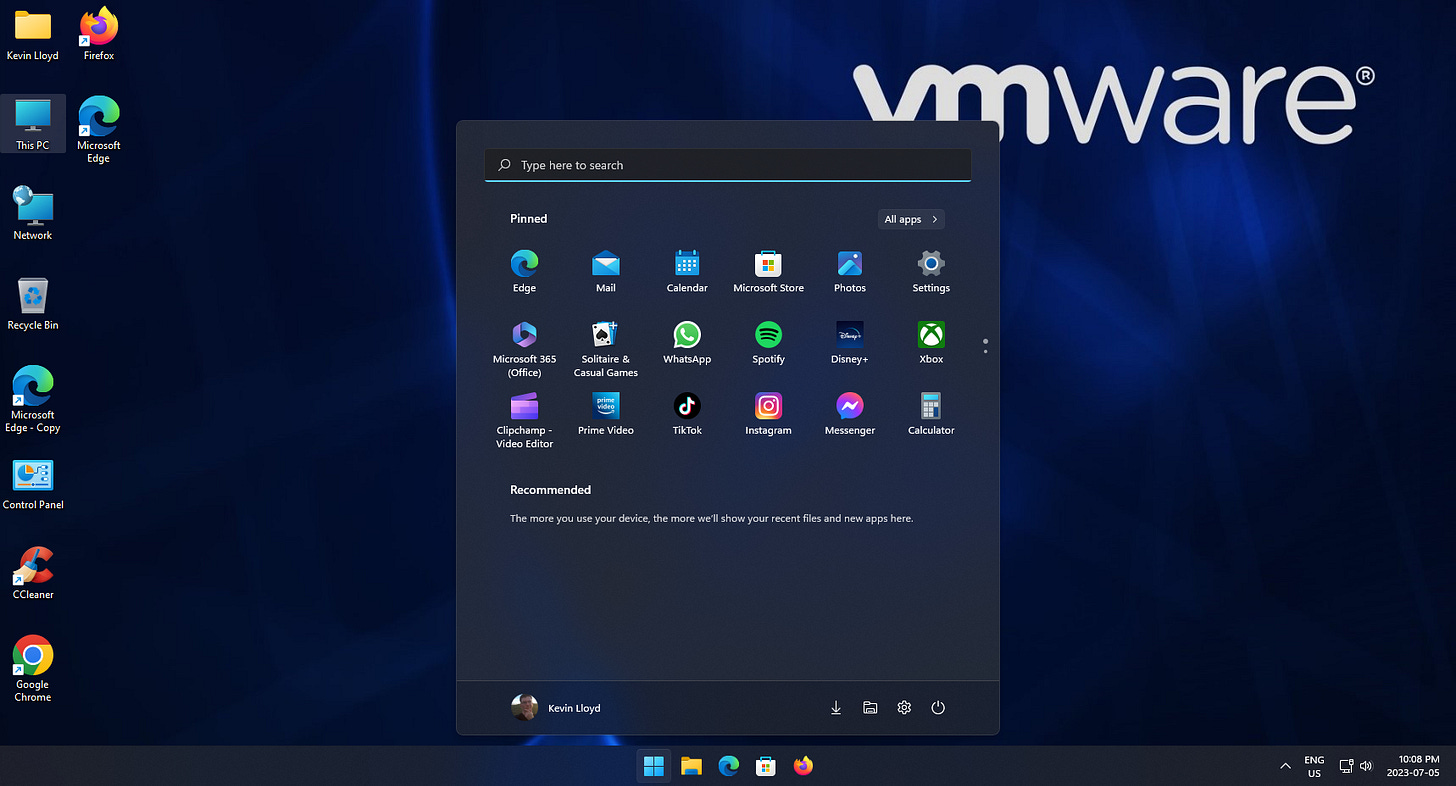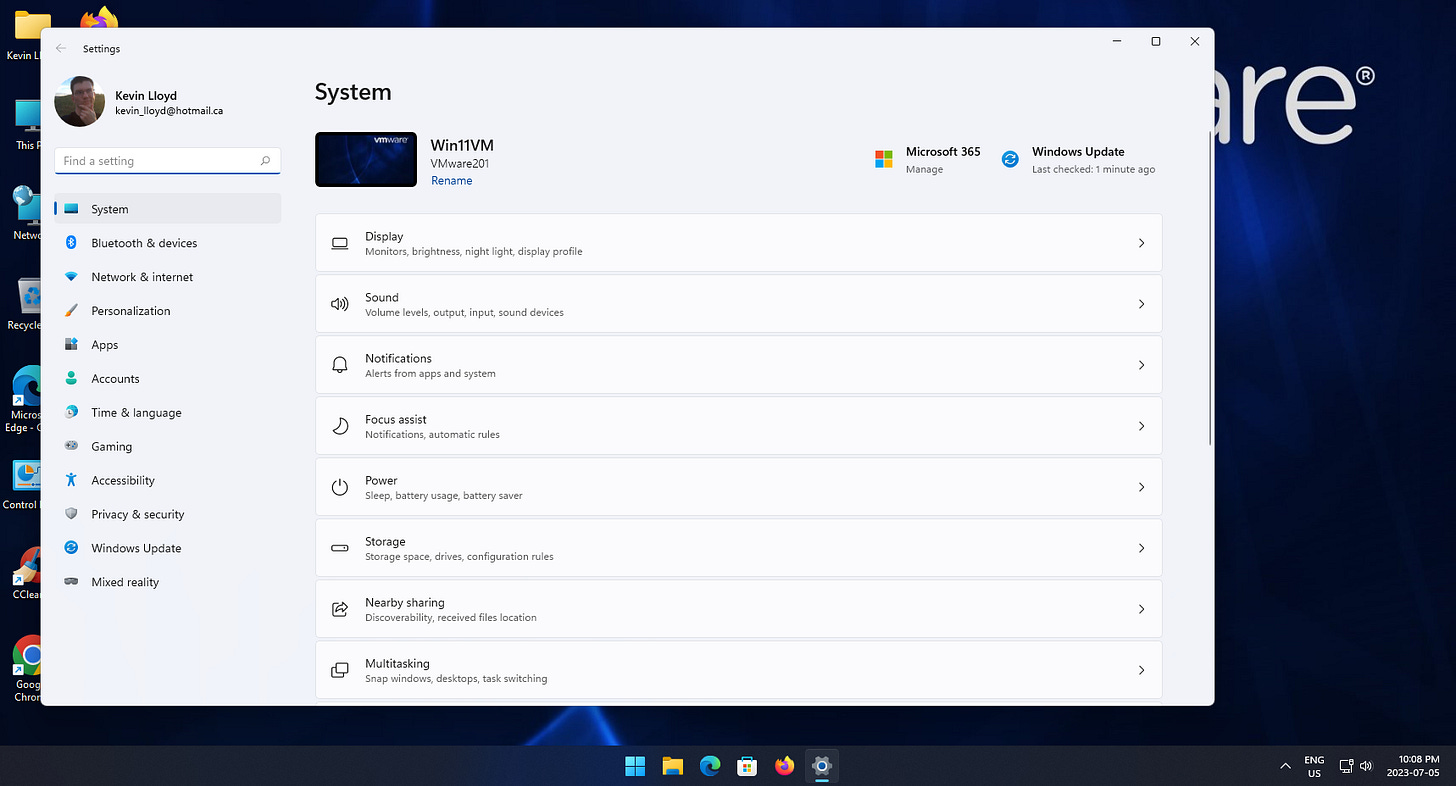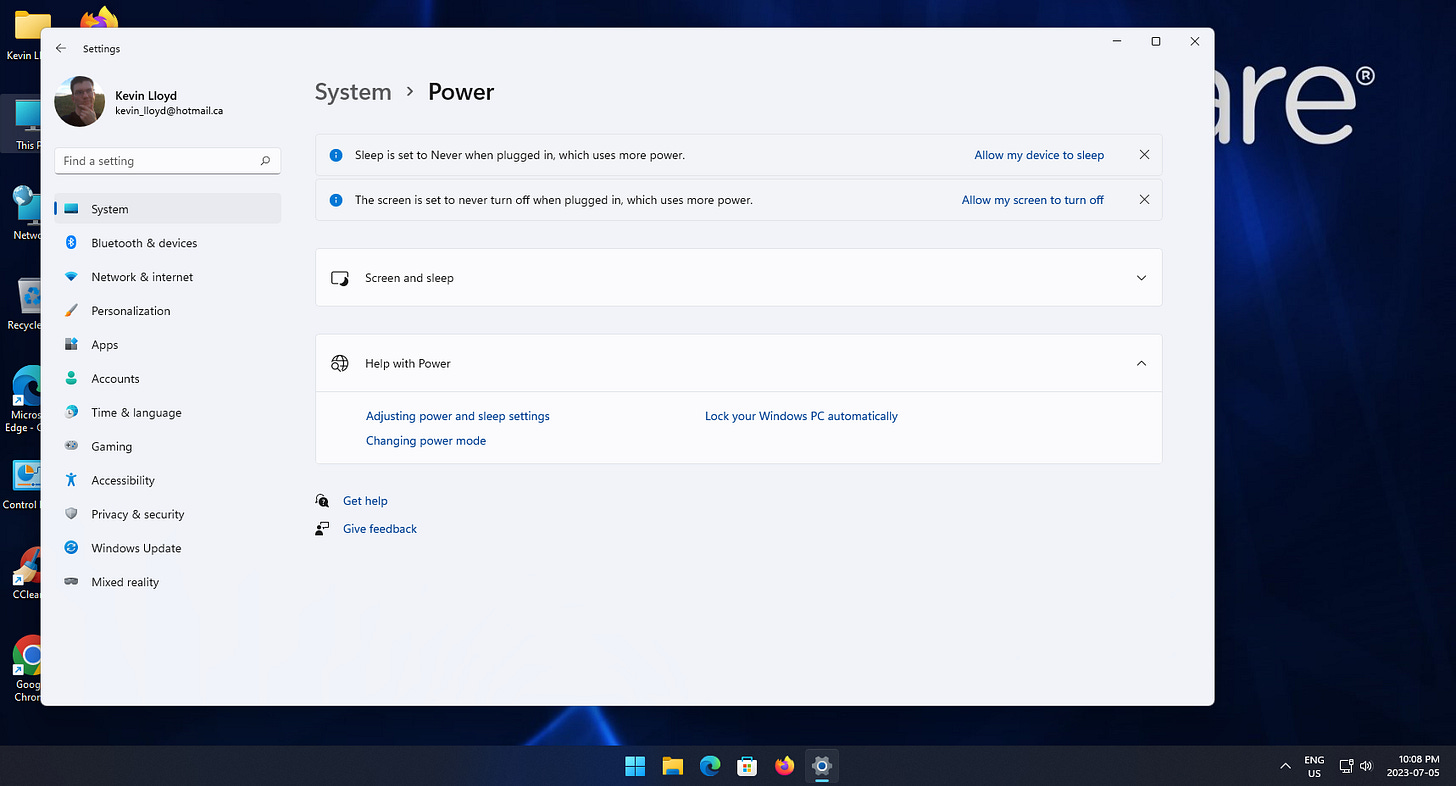How To Change Sleep and Hibernation Settings in Windows 11
Sleep and hibernation can pause or interrupt system cleanups and tune-ups, often without warning. For best results, it’s a good idea to temporarily disable them during these tasks.
In this blog post, I’ll explain what it means for your computer to be “going to sleep” and why it’s different from “hibernation.” I will also discuss whether or not it’s actually beneficial to turn these settings on, even though Microsoft turned them on by default.
This blog post is part of my System Cleanup series for paid subscribers. Thank you for your support!
Windows's sleep and hibernation settings are enabled by default, and I've lost count of the number of times I have tried to connect remotely to a client's computer, but I cannot because the computer has gone to sleep or into hibernation mode due to inactivity beyond as little as 5 minutes.
As per HowToGeek.com:
"Sleep mode is a power-saving state that is similar to pausing a DVD movie. All actions on the computer are stopped, any open documents and applications are put in memory while the computer goes into a low-power state. The computer technically stays on, but only uses a bit of power. You can quickly resume normal, full-power operation within a few seconds. Sleep mode is basically the same thing as “Standby” mode."
Sleep mode is useful if you want to stop working for a short period of time. The computer doesn’t use much power in Sleep mode, but it does use some."
Hibernation mode is like the Sleep mode. It suspends whatever is happening on your computer in an effort to save power. Again, this is ideal for laptops for situations where you can't quickly plug it in. Hiberation saves the contents of RAM (what is actively being used on the computer, what you see on your screen), to your hard drive, so you can get started from where you left off.
During Hibernation, all your apps or anything else you have open are saved on your hard drive instead of using RAM (memory) to conserve power.
IMPORTANT: Sleep and Hibernation
If your computer goes to sleep or hibernates during the System Cleanup, or before or during the Monthly Tune-Up and Updates, the System Cleanup or Monthly Tune-up may not go smoothly.
Please open the Start Menu in Windows 11, and click on the gear icon, or "Settings".
Then scroll down a bit on the right hand side, and click on "Power".
Then scroll down a bit on the right hand side, and click on "Power".
On the "Power" page, please click to expand "Screen and Sleep".
Next to "when plugged in, turn off my screen after", click where it says "5 minutes". Scroll down to "Never", and click that.
Please do the same for "When plugged in, put my device to sleep after", and choose "Never".
You can close any open windows now. Hibernation won't be a concern unless you have a laptop. I don't have a Windows 11 laptop, so I can't demonstrate these steps, but you can find detailed step-by-step instructions via WindowsReport.com.
Table of Contents
System Cleanup Series: How To Use PatchMyPC to Keep Your Programs Up to Date
System Cleanup Series: Uninstall (Remove) Apps and Programs in Windows 11
Thank you so much for reading this blog post! Please consider supporting my work directly, or using Buy Me a Coffee! Your support makes my work possible.






